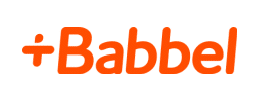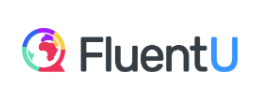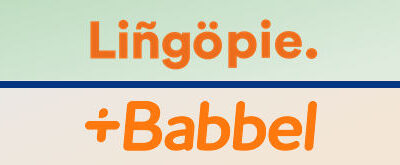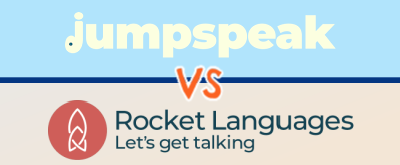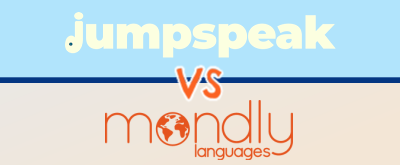When it comes to language learning, both FluentU and Babbel offer unique approaches tailored to different types of learners. This article breaks down their key features, teaching methods, and overall effectiveness to help you decide which program best fits your needs.
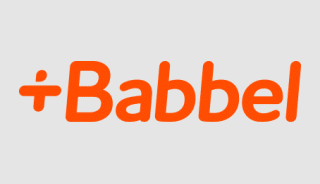
Sale: 55% OFF
Applied in Cart
|
$8-$15/mo |
Ideal language learning app for beginner and intermediate learners given Babbel’s quick, engaging lessons and helpful tools. |

14-Day Free Trial
Sign Up Now
|
$12-$30/mo |
Language learning program that is suited well for visual learners given its curriculum revolves around video content. |
Editor’s Choice
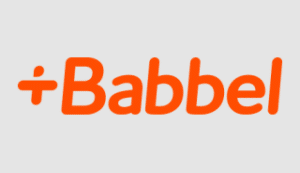
Babbel
- Multiple Subscription Options
- Money Back Guarantee
Pros
- More affordable than FluentU
- Well-rounded language program that covers all aspects of language learning
- Quick, engaging lessons
- Impressive mix of practice drills and exercises
- Accurate speech recognition technology
Cons
- Lessons do not include video
- Verbal practice is somewhat basic
Why Babbel Is Better Than FluentU
To begin, let’s discuss the strengths of the Babbel program in relation to FluentU. That way, you can decide whether Babbel is a good choice for your learning style and budget.
Short, Diverse Lessons
Babbel’s first major advantage is its lesson diversity and comprehensiveness compared to FluentU. Babbel’s short, 10-15 minute lessons move quickly, blending various interactive exercises that engage users in listening, reading, writing, and speaking.
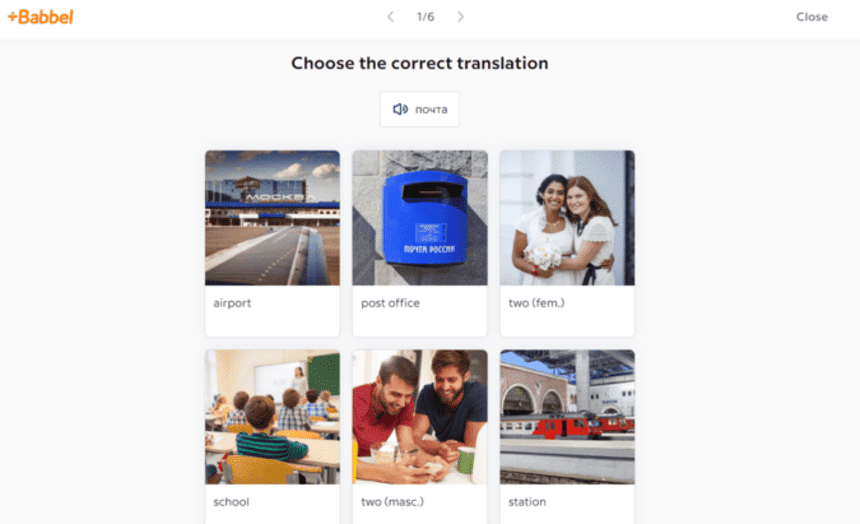
These exercises include a mix of flashcards, multiple-choice questions, sentence building, fill-in-the-blank prompts, and conversation simulations, providing a fast-paced and varied experience (somewhat similar to Duolingo).
In contrast, FluentU focuses primarily on video-based learning, which emphasizes listening and reading without as much direct speaking practice. This gives Babbel an edge, as speaking exercises are critical to developing language proficiency.
More Affordable Than FluentU
Let’s dive into pricing and affordability, starting with Babbel. They offer a range of plans priced between $8 and $15 per month, with an additional option for a lifetime plan that provides access to all 14 languages for about $250.
On the other hand, FluentU has two subscription options that grant access to all nine of their languages. Users can opt for a monthly plan at $30 per month, or choose an annual subscription that costs around $12-$15 per month.
Overall, Babbel is the more budget-friendly choice, potentially saving you $4 to $15 each month. Additionally, Babbel offers a 20-day money-back guarantee, while FluentU provides a 14-day free trial.
Impressive Speech Software
Another standout feature of Babbel is its speech recognition technology, which actively assesses your pronunciation as you work through verbal exercises. If you mispronounce words or phrases, Babbel prompts you to try again, offering immediate feedback—a feature that FluentU lacks.

This capability makes Babbel particularly advantageous for those looking to enhance their speaking skills. Not only does Babbel incorporate verbal practice into its lessons, but it also provides the corrective feedback needed to refine pronunciation.
Grammar Instruction
Another key benefit of Babbel is its emphasis on grammar instruction, whereas FluentU tends to sideline grammar content. FluentU’s grammar approach is limited to basic labels for words—identifying them as nouns, verbs, or indicating tense—without deeper explanations.
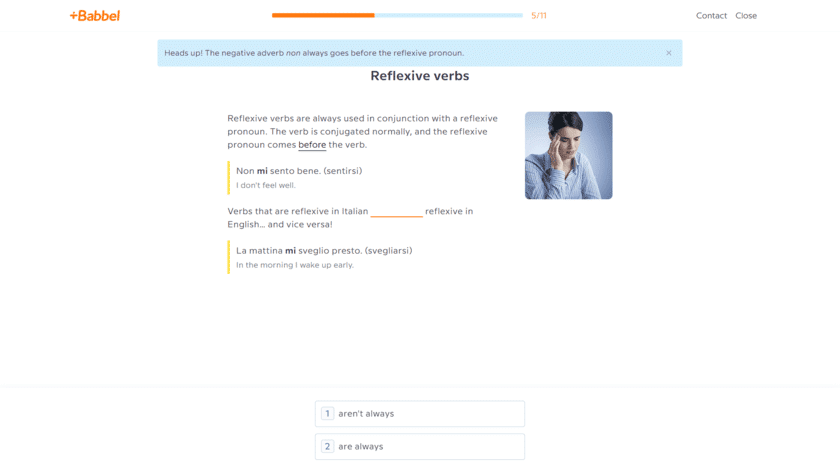
Babbel, by contrast, offers a more thoughtful approach to grammar without overwhelming learners. It introduces concepts with brief explanations, adds cultural context, and follows up with interactive exercises like fill-in-the-blank sentences to reinforce understanding.
This structured yet accessible method makes Babbel particularly effective for grasping the grammar of a new language.
Live Classes Available
The last advantage of Babbel is the availability of live classes, which provide an engaging way to learn beyond the standard subscription. Although these classes require an additional fee, Babbel offers a wide selection of small-group sessions each week across all proficiency levels.
Classes typically run about an hour and cover diverse topics, from international cuisine and cultural history to sports, allowing learners to choose areas that match their interests. These live sessions offer a valuable opportunity to explore specific themes, interact with other learners, and gain insights from knowledgeable instructors. With numerous options, you can easily select convenient times and participate as your schedule allows.
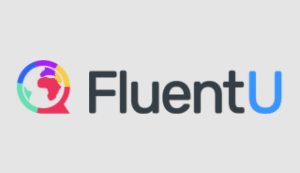
FluentU
- 10 Languages
- Money Back Guarantee
Pros
- Large content library (thousands of videos)
- Create custom flashcards
- Quizzes help with material retention
Cons
- More expensive than Babbel
- Limited grammar instruction
- No speech software for pronunciation feedback
Why FluentU Is Better Than Babbel
Now that we’ve covered Babbel, let’s turn the tables and discuss the strengths of the FluentU language program.
Large Video Library
A standout feature of FluentU is its extensive video library, which goes beyond standard lessons by giving users access to thousands of authentic videos in their target language (somewhat similar to LingQ). These aren’t just basic learning clips—they’re real-world videos like music videos, TV segments, commercials, movie trailers, and more, similar to what you’d find on YouTube.
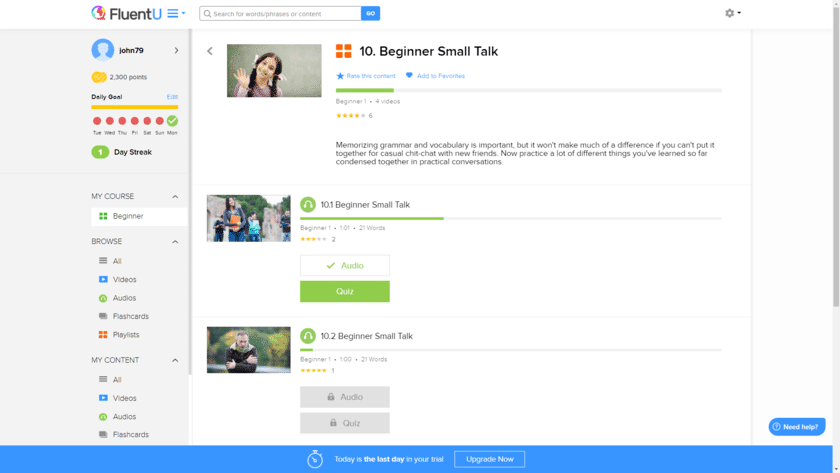
FluentU’s interface makes it easy to tailor content to your interests and fluency level with search options and numerous filters (like Yabla). For instance, if you’re learning French at an intermediate level and are curious about art, you can quickly find a relevant video, such as a short piece on impressionism. Each video also comes with quizzes to reinforce what you’ve learned.
Overall, FluentU offers an enjoyable way to absorb language naturally, making it feel less like studying and more like watching engaging content. While LingoPie provides some added entertainment value, FluentU still excels in offering a comprehensive learning experience through video.
Better Fit For Visual Learners
A major strength of FluentU is its emphasis on visuals—filled with images, videos, and subtitles, making it an ideal choice for visual learners, whether you’re studying French, Italian, German, or another language.

For many people, learning is most effective when they can connect words to visual cues, as this helps form mental associations that make recalling vocabulary easier later. If visual aids are key to your learning process, FluentU can be a strong fit, allowing you to learn by associating words with memorable images and clips.
Verdict: Which Language Program Is Best?
After using and evaluating both programs, we find Babbel to be the clear winner. Babbel offers a more comprehensive language curriculum, with thorough grammar explanations and practice exercises that cover listening, reading, writing, and speaking.
In our view, FluentU serves best as an entertaining supplemental tool to pair with a program like Babbel. But if you’re choosing just one language app, Babbel stands out as the stronger choice.
The main difference between Babbel and FluentU lies in their teaching approaches: Babbel offers a structured curriculum with grammar-focused lessons and interactive exercises, while FluentU emphasizes learning through real-world videos like music videos and TV clips to build listening and reading skills.
The better language app depends on your learning style and goals: Babbel is ideal for those seeking a structured, comprehensive approach with in-depth grammar lessons and practice exercises. FluentU, on the other hand, is better suited for visual learners who enjoy learning through engaging real-world videos to improve listening and reading skills. In the end, our team recommends Babbel over FluentU.

